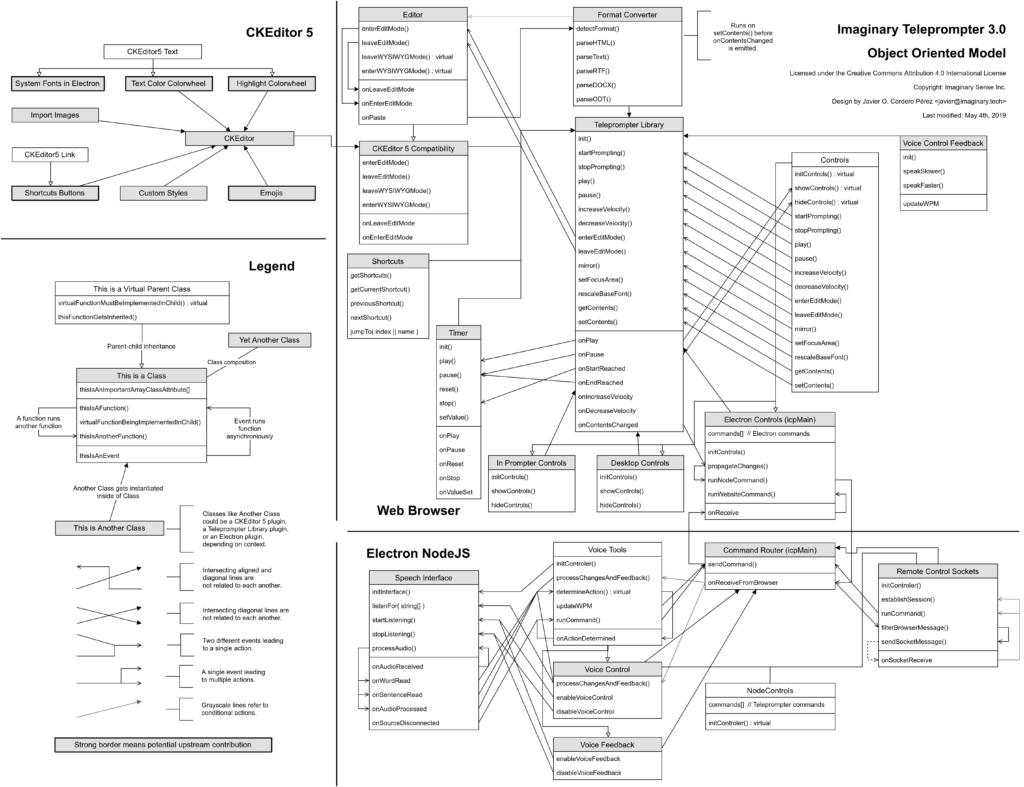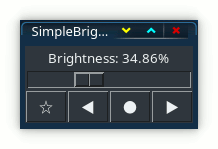Teleprompter 3.0 classes and Simple Brightness update (May 2019) - Imaginary Tech
Teleprompter 3.0 classes and Simple Brightness update (May 2019)
Saturday, May 25, 2019
Busy month! Here at Imaginary Sense, we’ve invested most of May working on a client project. Nevertheless, we’ve also got a brief update regarding Imaginary Teleprompter and an update about my personal pet project, Simple Brightness.
Imaginary Teleprompter’s Status
Starting to work on Imaginary Teleprompter’s refactoring process and having clear goals set, has allowed us to better understand how the software must be restructured in order to provide the features we and our users want to see on Imaginary Teleprompter 3.0. This refactoring process is required to implement some of the features our users have been requesting and to make future teleprompter development sustainable in the long run.
Before getting ourselves busy with a large client project this month, I managed to finish organizing Imaginary Teleprompter’s goals in Trello:
https://trello.com/b/S4oBSfJi/imaginary-teleprompter
I also got to design a system class diagram, which represents the components that need to be implemented, and how they will interact with each other.

As you can see, the teleprompter is divided in three main components:
- The Teleprompter Library (which runs on the web browser)
- The CKEditor Framework (which also runs on the browser)
- And desktop only features provided through the Electron Framework
Transforming most of the browser code, which is currently called “Teleprompter-Core“, into a JavaScript Teleprompter Library with a series of plug-ins, will allow us to more easily port Imaginary Teleprompter to mobile devices. It’ll also allow other people to incorporate our teleprompter into their own software solutions.
Moving some of the code that currently runs straight on the browser into the new CKEditor 5 framework will give us a text editor agnostic teleprompter that allows for in-prompter editing (a requested feature). Finally, the new plug-in based structure will enable us to develop more complex features, such as reading system fonts, including non-latin fonts, speech recognition control, speech feedback and remote control.
Including system and non-latin fonts are our most requested features at the time. We’re considering starting a crowdfunding campaign to pay for software development, but it is still early to give any details about this.
Simple Brightness Update
There’s a new update for Simple Brightness, the brightnessctl frontend I wrote to control the brightness on my Linux WindowMaker sessions.

(Simple Brightness v0.2)
The new features are:
- You can now save and quickly move around your preferred brightness configurations
- Preferred backlight settings are saved on application exit and loaded on application start
- Moving the backlight slider to the lowest setting no longer shuts down the backlight
- There’s a new button to switch the backlight on and off
What’s unique about Simple Brightness with this update is that setting and moving around your preferred brightness settings works similar to how you would set keyframes on video editing software. Which, given my past as a video editor, I find very cool!
« Imaginary Teleprompter refactoring begins, plus new micro projects: Toonsy & Simple Brightness (April, 2019)How I Gained Access to my Stolen E-mail Account »